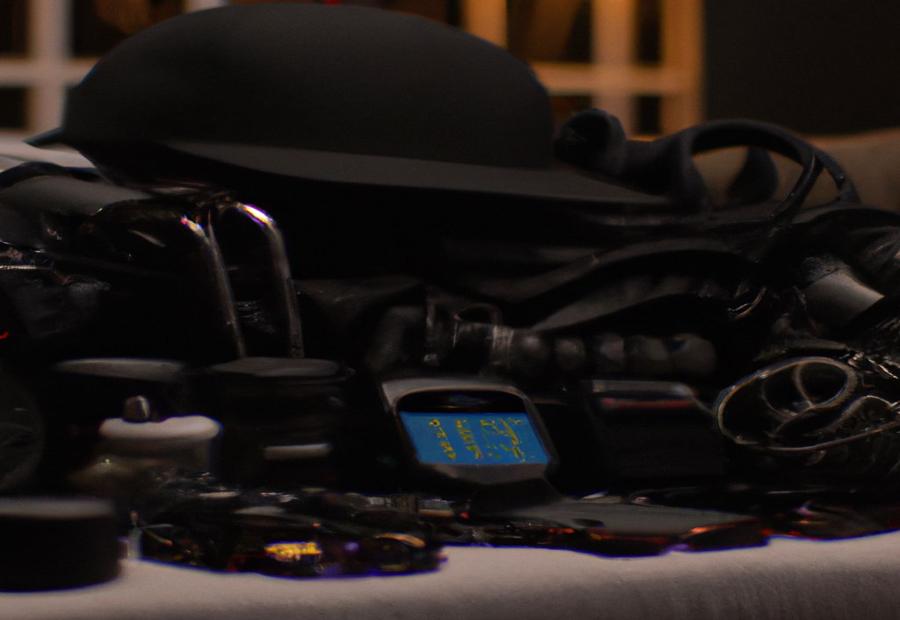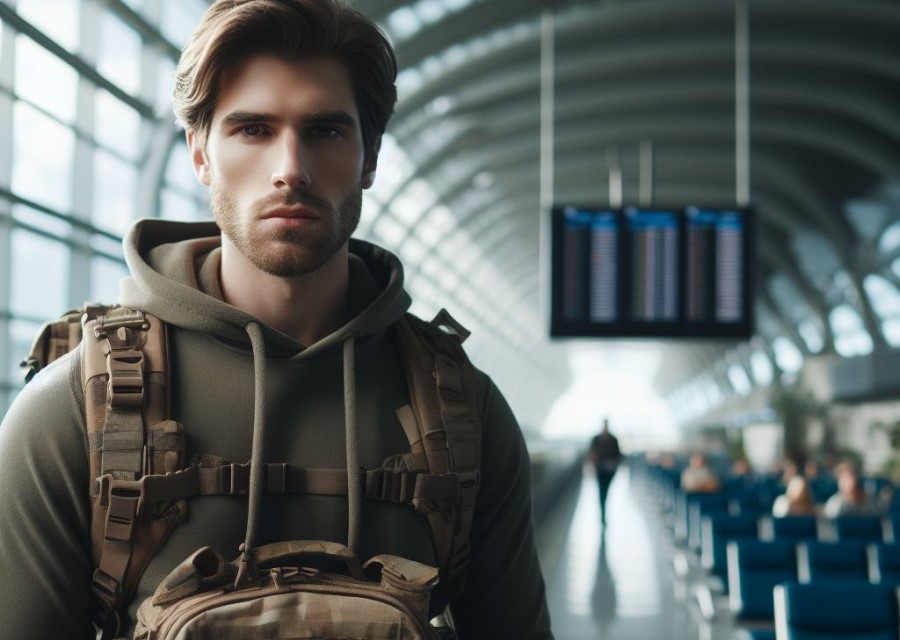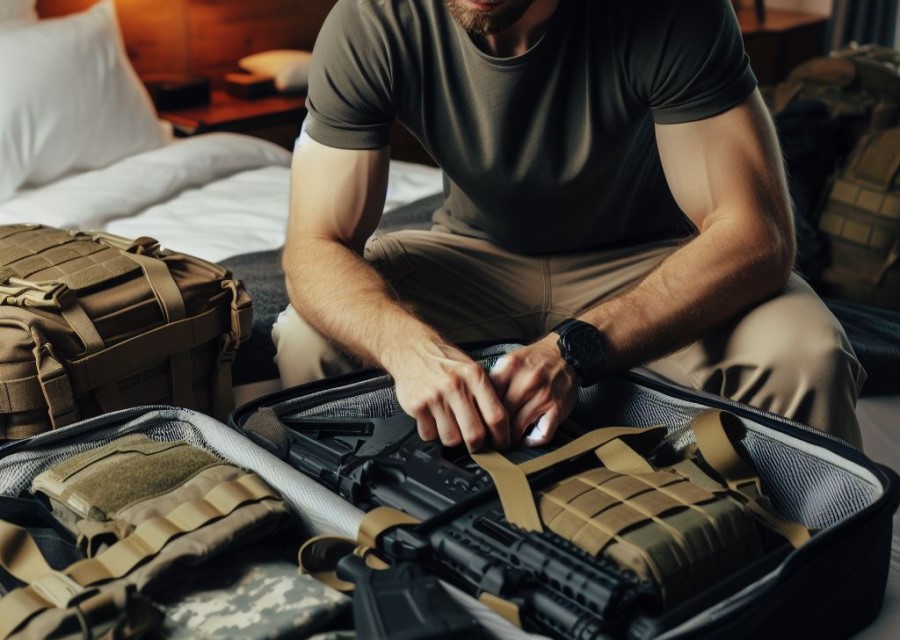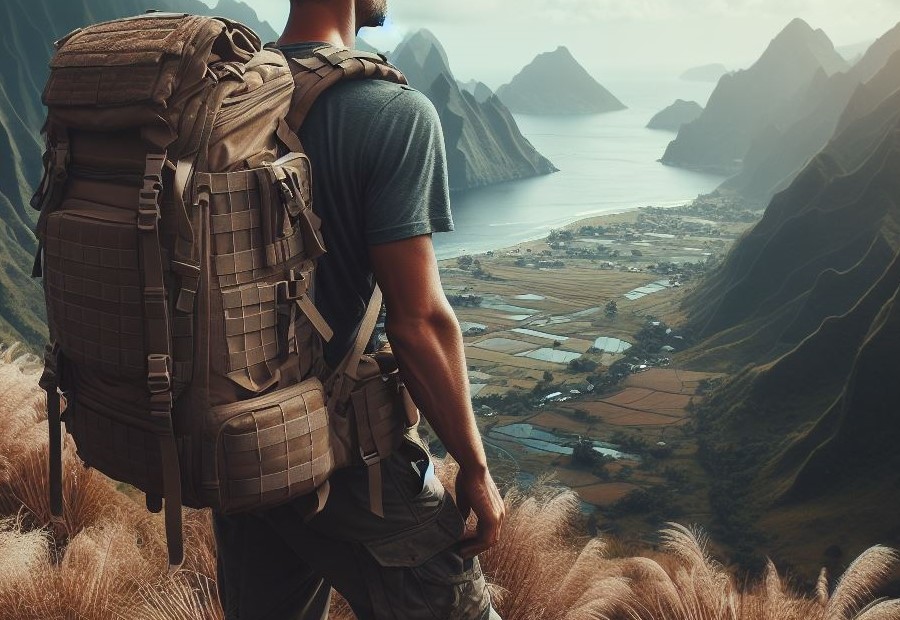Traveling with tactical gear can be a necessity for certain individuals, such as law enforcement officers, military personnel, or outdoor enthusiasts. However, it is essential to understand the regulations and guidelines surrounding the transportation of such equipment to ensure a smooth travel experience.
This article will provide an introduction to traveling with tactical gear, explain what tactical gear entails, and address the question of whether it is permissible to travel with such gear.
We will delve into the Transportation Security Administration (TSA) guidelines, airline policies, and local laws and regulations that need to be considered. we will explore the specific types of tactical gear that are permissible for travel, such as clothing, bags, knives, flashlights, communication devices, and personal protection equipment (PPE).
We will also provide tips on how to properly pack and secure tactical gear, including organizing items, protecting fragile gear, and discreetly carrying them. By following these guidelines and being well-informed, travelers can navigate the complexities of traveling with tactical gear and ensure a hassle-free journey.
What is Tactical Gear?

Photo Credits: Paintballbuzz.Com by Jonathan Lee
Tactical gear refers to specialized equipment used by military personnel, law enforcement officers, and outdoor enthusiasts for various purposes. It is designed to enhance their effectiveness, safety, and efficiency in challenging situations. Some examples of tactical gear include bulletproof vests, helmets, tactical boots, gloves, backpacks, and flashlights.
Tactical gear is typically made from durable materials such as nylon, Kevlar, and reinforced plastics. It is designed to withstand rough conditions, provide protection against threats, and offer functionality for specific tasks. The gear may also include features like MOLLE webbing for attaching modular pouches and accessories.
A pro-tip when considering tactical gear is to prioritize functionality and quality. Look for gear that is designed for your specific needs and activities. Research reputable brands that are known for their durable and reliable products. Consider the specific features and capabilities that you require, such as water resistance, lightweight design, or compatibility with other equipment.
Remember that the use of tactical gear is subject to regulations and restrictions in different contexts and jurisdictions. Always check local laws and regulations before traveling or using tactical gear in certain areas. Lastly, proper training and knowledge on how to use the gear safely and effectively is essential for maximizing its benefits.
So, Can You Travel with Tactical Gear?

When it comes to traveling with tactical gear, many questions arise. Are you allowed to bring it on a flight? What are the rules and regulations? In this section, we will dig into the answers you seek.
We’ll explore the Transportation Security Administration guidelines, delve into specific airline policies, and even touch on local laws and regulations. So, if you’re wondering about the dos and don’ts of traveling with tactical gear, keep reading for all the essential information you need.
Understanding Transportation Security Administration Guidelines
Understanding Transportation Security Administration (TSA) guidelines is crucial when traveling with tactical gear. Following these guidelines ensures a smooth and hassle-free travel experience. Remember to check the specific regulations at your departure and arrival airports, as these may vary. By adhering to the guidelines and respecting security procedures, you can travel confidently with your tactical gear.
| Guideline | Description |
| Liquids Rule | According to the TSA guidelines, liquids in carry-on luggage must be in containers of 3.4 ounces (100 milliliters) or smaller. These containers should be placed in a clear, quart-sized plastic bag. |
| Prohibited Items | TSA has a list of prohibited items that are not allowed in carry-on luggage. This includes items such as firearms, sharp objects, and explosives. It is important to review and follow this list when traveling with tactical gear. |
| Security Screening | All travelers, including those with tactical gear, must go through security screening at the airport. This includes walking through a metal detector and having carry-on luggage scanned. Some tactical gear, such as knives or multi-tools, may need to be declared or placed in checked baggage. |
| Checked Baggage | If you are traveling with larger tactical gear items, such as firearms or larger tools, they should be packed securely in checked baggage. It is important to check airline policies as some items may require special packaging or documentation. |
| Suspicious Items | If security personnel identify any suspicious items during screening, they may need to further inspect or remove them from your luggage. It is advisable to cooperate with their instructions and answer any questions they may have. |
Checking Airline Policies on Tactical Gear
This step ensures that you comply with the guidelines set by the airlines, avoiding any potential issues or delays during your journey.
Here are some important considerations to keep in mind:
- Review the airline’s website or contact their customer service to obtain specific information on their policies regarding carrying tactical gear.
- Check if there are any restrictions or limitations on the type of tactical gear that can be brought on board. Some items may need to be packed in checked baggage rather than carried in-cabin.
- Verify if there are any size or weight restrictions for the gear. Airlines often have specific dimensions and weight limits for both carry-on and checked baggage.
- Understand the rules for transporting weapons or sharp objects. Knives and multi-tools, for example, may need to be securely packed and declared to the airline.
- Be aware of any documentation required. Certain countries or airlines may ask for permits or licenses to carry certain types of tactical gear.
By taking the time to check airline policies on tactical gear, you can ensure that you pack and transport your equipment in accordance with the regulations. This will help to make your travel experience smoother and hassle-free.
Additionally, it is advised to arrive at the airport well in advance, especially if you are carrying tactical gear that may require additional security screening. Keep your gear properly organized and secured to prevent any damage during transit. If you have any doubts or questions about airline policies, don’t hesitate to reach out to the airline directly for clarification.
Researching Local Laws and Regulations
Researching local laws and regulations is absolutely essential when traveling with tactical gear. It is crucial to have a clear understanding of the legal requirements and restrictions in the specific location you plan to visit. By conducting thorough research on local laws and regulations, you can guarantee that you are fully compliant with the law and prevent any potential legal issues or penalties.
To effectively research local laws and regulations, it is important to follow these steps:
1. Begin by identifying the specific area or jurisdiction you will be visiting. Different countries, states, or cities may have their own set of regulations pertaining to the possession and transportation of tactical gear.
2. Look for credible sources such as official government websites, law enforcement agencies, or travel advisories that provide accurate and up-to-date information on local laws and regulations.
3. Pay close attention to any specific requirements or restrictions related to the type of tactical gear you intend to bring. Certain areas may place limitations on the size or type of knives that are permissible.
4. Take note of any necessary permits or licenses that may be required for certain types of gear. Some locations may demand a permit or license for the possession of firearms or specific self-defense equipment.
5. Stay mindful of any cultural or religious sensitivities that may impact the acceptance or legality of certain types of tactical gear. Respecting local customs and traditions is of utmost importance.
By thoroughly researching local laws and regulations, you can ensure that you are well-informed and properly prepared when traveling with tactical gear. This will enable you to enjoy your trip with peace of mind, while avoiding any legal complications.
What Type of Tactical Gear Can You Travel With?

Are you wondering what type of tactical gear you can bring along on your travels? Get ready to gear up as we explore the different categories of equipment that are travel-friendly.
From clothing and footwear to bags and backpacks, knives and multi-tools to flashlights and batteries, communication devices to personal protection equipment, we’ll cover it all.
Whether you’re a seasoned adventurer or a first-time traveler, this section will provide you with the essential insights to pack the right tactical gear for your journey. So, let’s dive in and discover the must-haves for a tactical travel experience!
Clothing and Footwear
When it comes to traveling with tactical gear, choosing appropriate clothing and footwear is crucial for comfort and functionality.
1. Clothing:– Opt for lightweight and breathable fabrics such as moisture-wicking materials to keep you cool and dry during your travels.
- Consider clothing with multiple pockets and compartments for convenient storage of small items like keys, wallets, or tools.
- Choose neutral colors or camouflage patterns to blend in with your surroundings if necessary.
2. Footwear:– Select sturdy and comfortable footwear suitable for your travel activities, whether it’s hiking, urban exploring, or attending professional events.
- Look for shoes or boots with slip-resistant soles for increased traction.
- Ensure proper fit and support to prevent discomfort or foot injuries during your journey.
Bags and Backpacks
When it comes to traveling with bags and backpacks, choosing the right bags and backpacks is crucial for convenience and functionality.
- Size and Capacity: Consider the size of the bag or backpack based on your specific needs. If you’re carrying a lot of gear, opt for a larger capacity bag to accommodate all your items.
- Durability: Ensure that the bag or backpack is made of sturdy materials, such as nylon or polyester, that can withstand the rigors of travel and any harsh conditions you may encounter.
- Compartments and Organization: Look for bags and backpacks with multiple compartments and pockets to help keep your gear organized. This will make it easier to access specific items without having to rummage through everything.
- Comfort and Ergonomics: Consider the design and features of the bag or backpack that contribute to comfort, such as padded shoulder straps, adjustable waist belts, and back support. These elements will distribute the weight of your gear evenly and reduce strain on your body.
Finding the right bags and backpacks for traveling with tactical gear can greatly enhance your overall experience, ensuring that your gear is well-protected, easily accessible, and organized.
Knives and Multi-Tools
When it comes to traveling with knives and multi-tools, there are some important considerations to keep in mind to ensure a smooth and hassle-free experience.
| Consideration | Details |
| Transportation Security Administration (TSA) Guidelines | Check the TSA guidelines to understand the rules and regulations regarding knives and multi-tools. Ensure that your knives and multi-tools comply with the size and length restrictions set by the TSA. |
| Airline Policies | Research specific airline policies regarding knives and multi-tools. While some airlines may allow knives and multi-tools in carry-on luggage, others may require them to be placed in checked bags. Familiarize yourself with the policies to avoid any issues at the airport. |
| Local Laws and Regulations | Research the destination’s local laws and regulations regarding knives and multi-tools. Some places have strict regulations on carrying such items, and it’s essential to comply with the local laws to avoid legal complications. |
| Packing and Storage | Properly pack and secure your knives and multi-tools to prevent any accidents or injuries during transportation. Use appropriate storage cases or sheaths to protect the blades and prevent them from being easily accessible. |
| Declaration and Disclosure | If required, declare your knives and multi-tools to the authorities or airline staff during the security screening process. Be honest and cooperative and follow any additional instructions provided by the authorities. |
By considering these factors, you can ensure that you are following the necessary guidelines and regulations while traveling with knives and multi-tools, promoting safety and a hassle-free experience.
Flashlights and Batteries
When it comes to traveling with tactical gear, flashlights and batteries are essential items to consider packing. Here are some key points to know about flashlights and batteries:
- Flashlights: A high-quality flashlight is a must-have for any tactical traveler. Look for flashlights that are compact, durable, and provide a powerful beam of light. Tactical flashlights often come with features like adjustable brightness levels, strobe functions, and waterproof capabilities. These flashlights are designed to withstand rugged conditions and provide reliable illumination in various situations.
- Batteries: It is crucial to pack spare batteries for your tactical flashlight. Opt for high-performance rechargeable batteries or lithium batteries, as they tend to provide longer lasting power. Make sure you check the battery requirements of your flashlight and carry extras accordingly. Placing batteries in a protective case or sleeve can prevent accidental discharge or damage while traveling.
- Importance of Flashlights provide essential illumination in low-light or emergency situations during your travels. They help enhance visibility, navigate unfamiliar areas, and ensure personal safety. Batteries, on the other hand, ensure that your flashlight remains functional throughout your journey. It’s important to have a reliable source of power for your flashlight to rely on when needed.
When traveling with flashlights and batteries, remember to adhere to airline regulations and local laws regarding battery storage and usage. Ensure that your flashlight is securely packed to prevent accidental activation and damage. Additionally, it’s always a good idea to carry backup flashlights and extra batteries to ensure you are prepared for any situation.
Communication Devices
The use of communication devices is crucial when traveling with tactical gear. These communication devices are essential for staying connected and ensuring effective communication in various situations. Below is a table that showcases different types of communication devices commonly used:
| Type of Communication Device | Description |
| Two-way Radios | These communication devices allow for direct communication between users within a specific range. They are particularly beneficial in group scenarios or when coordinating actions. |
| Satellite Phones | With satellite phones, you can communicate from remote or isolated locations where traditional cellular networks may not be available. These communication devices rely on signals transmitted via satellites. |
| Smartphones | Smartphones are versatile communication devices that offer various functionalities beyond voice calls. They can be used for sending texts, emails, GPS navigation, and accessing important information. |
| Portable Wi-Fi Hotspots | These communication devices create a Wi-Fi network that allows multiple devices to connect to the internet. They are useful for accessing online resources, communicating via messaging apps, and sharing real-time information. |
When selecting a communication device, it is important to consider factors such as range, battery life, durability, and compatibility with other gear. It is crucial to choose communication devices that will best meet your communication needs based on the environment and activities you will be engaging in.
Remember to check and comply with local regulations and restrictions regarding the use of communication devices. Some areas or situations may require specific permits or licenses for certain devices.
Ensure that your communication devices are secured and protected during travel to prevent damage or loss. Additionally, familiarize yourself with the proper operation and maintenance of these devices to ensure optimal performance when needed.
By carefully selecting and utilizing suitable communication devices, you can enhance your safety, coordination, and effectiveness when traveling with tactical gear.
Personal Protection Equipment
When traveling with tactical gear, personal protection equipment is an essential aspect to consider for ensuring safety and preparedness. Here are some examples of personal protection equipment that you can travel with:
- Protective clothing: Carry items such as bulletproof vests or stab-resistant shirts to enhance your personal safety.
- Protective eyewear: Goggles or safety glasses can shield your eyes from debris, glare, or potential hazards.
- Headgear: Helmets or hard hats provide protection against head injuries or falling objects.
- Gloves: Tactical gloves offer improved grip, dexterity, and protection for your hands during various activities.
- Ear protection: Earplugs or earmuffs are necessary to reduce noise exposure and prevent hearing damage.
- Masks or respirators: These equipment pieces safeguard your respiratory system by filtering out harmful particles or chemicals.
- Knee and elbow guards: These pads provide extra support and protection during physical activities or in case of falls.
- Body armor: Plates, carriers, or bulletproof vests offer additional protection against ballistic threats.
Remember to adhere to local laws and regulations regarding personal protection equipment when traveling. Additionally, check with transportation security and airlines to ensure compliance with their guidelines for carrying such gear.
How to Pack Tactical Gear for Travel

Packing tactical gear for travel can be a game-changer, helping you stay prepared and protected wherever you go.
In this guide, we’ll unlock the secrets to efficiently organizing and securing your essential items.
We’ll also explore methods for safeguarding fragile or sensitive gear during the journey.
Plus, we’ll reveal discreet ways to carry your tactical gear, ensuring both convenience and peace of mind.
So, let’s dive in and discover how to pack like a pro for your next adventure!
Organizing and Securing Items Properly
When it comes to traveling with tactical gear, organizing and securing your items properly is essential to ensure a smooth and hassle-free experience.
- First and foremost, make a checklist of all the necessary gear you will be taking with you.
- Next, use a durable and reliable gear bag or backpack to store your items.
- Arrange your gear in a systematic and logical manner, grouping similar items together. This will not only help with organizing and securing items properly but also make it easier to locate and access specific gear when needed.
- For added protection, utilize dividers, pouches, or compartments within your bag to separate and safeguard fragile or sensitive gear.
- Remember to securely stow any sharp objects or tools, such as knives or multi-tools, in a sheath or protective cover to prevent accidental injuries while also focusing on organizing and securing your items properly.
- Additionally, ensure that any communication devices, such as radios or walkie-talkies, are fully charged and safely stored in a convenient location within your bag. This step contributes to organizing and securing items properly during your travels.
- Consider enhancing the security of your bag by using combination locks or TSA-approved locks. This will effectively secure your belongings and discourage unauthorized access.
Pro-tip: Taking the time to meticulously organize and securely store your tactical gear not only helps to protect your items but also expedites the process of going through security checkpoints, resulting in a smoother travel experience overall.
Protecting Fragile or Sensitive Gear
Protecting fragile or sensitive gear while traveling with tactical gear is crucial to ensure its functionality and durability. Here are some steps to follow:
- Pack fragile or sensitive gear in padded or protective cases to prevent damage from impact or rough handling.
- Use shock-absorbing materials, such as foam inserts or bubble wrap, to provide cushioning and reduce the risk of breakage.
- Separate delicate items from each other to avoid potential friction or contact that could cause scratches or other damage.
- Consider using waterproof or water-resistant cases or bags to protect gear from moisture or spills.
- Securely fasten all closures and zippers to avoid accidental openings and prevent gear from falling out.
- Label and clearly mark fragile or sensitive gear to ensure it receives appropriate care during transportation.
- Place the protected gear in a larger bag or suitcase to provide an extra layer of cushioning and limit external impacts.
Pro-tip: It’s advisable to invest in quality protective gear, such as impact-resistant cases or shock-proof bags, specifically designed for fragile or sensitive equipment. Additionally, consider carrying essential items as carry-on luggage to have better control over their safety and minimize the risk of mishandling by baggage handlers.
Discreetly Carrying Tactical Gear
When it comes to discreetly carrying tactical gear while traveling, there are several strategies you can employ to avoid unnecessary attention and ensure the safe transport of your equipment.
- Choose inconspicuous bags: Opt for bags that do not attract unnecessary attention or scream “tactical”. Look for bags that resemble everyday carry items or common travel bags.
- Utilize hidden compartments: Invest in bags or backpacks that come with discreet hidden compartments. These concealed compartments can provide a secure and discreet way to carry your tactical gear without drawing attention.
- Consider concealed clothing: Explore clothing options that have specially designed hidden pockets or compartments for discreetly hiding your gear. These clothing items can effectively facilitate the discreet carry of smaller tactical items.
- Camouflage your gear: Use clothing or tactical gear that blends well with your surroundings to minimize the visibility of your gear and avoid attracting unwanted attention.
Pro tip: Remember to always research and adhere to local laws and regulations regarding the carrying of tactical gear. It is important to stay informed and ensure that you are within the legal boundaries while traveling with your gear.
Tips for Traveling with Tactical Gear

When it comes to traveling with tactical gear, there are a few key tips to keep in mind.
In this section, we’ll explore how to navigate local laws and regulations, ensure smooth communication with transportation security and airlines, use discretion to avoid unnecessary attention, and keep your gear secure and protected throughout your journey.
With these helpful pointers, you’ll be well-prepared to travel with your tactical gear hassle-free. So let’s dive in and make your travel experience a breeze!
Researching Local Laws and Regulations
When traveling with tactical gear, it is crucial to conduct research on local laws and regulations in order to ensure compliance and avoid any legal issues.
Thoroughly researching local laws and regulations provides valuable information regarding the permissibility of certain types of tactical gear in the destination country or city.
It is of utmost importance to be knowledgeable about any restrictions on specific items such as knives, firearms, or self-defense tools. Some locations may have strict regulations or complete bans on particular types of gear.
In addition, conducting research on local laws and regulations assists in understanding any requirements for permits or licenses that may be necessary for the possession or carrying of certain tactical gear.
By conducting a thorough investigation of local laws and regulations, travelers can ensure that they pack the appropriate gear and prevent any legal consequences or confiscation of their items during security checks or customs inspections.
Keep in mind that regulations can vary significantly from one place to another, so it is vital to stay informed and up to date with the laws of the specific destination.
Informing Transportation Security and Airlines
Incorporating keywords naturally: informing transportation security and airlines is crucial when traveling with tactical gear. By being proactive and transparent about the nature of your gear, you can ensure a smooth and hassle-free travel experience.
Firstly, it is important to familiarize yourself with the guidelines set by the Transportation Security Administration (TSA). These guidelines provide specific instructions on how to pack and declare your tactical gear, ensuring compliance with airport security measures.
Additionally, make sure to check the policies of the airline you are traveling with. Some airlines may have specific regulations or restrictions regarding the transportation of certain types of tactical gear. Being aware of these policies in advance will help you avoid any surprises or complications at the airport.
Furthermore, it is recommended to research the local laws and regulations of your destination. Different countries or regions may have specific rules regarding the possession or transportation of tactical gear. By being informed about these regulations, you can avoid any legal issues during your trip.
Remember, informing transportation security and airlines about your tactical gear is not only for your benefit but also for the safety and security of others. By providing accurate information and following the necessary protocols, you can ensure a safer travel experience for everyone involved.
Using Discretion and Avoiding Unnecessary Attention
When traveling with tactical gear, it is essential to use discretion and avoid unnecessary attention. Follow these guidelines to ensure a smooth and hassle-free experience:
- Know the local laws and regulations regarding the possession and transportation of tactical gear. It’s important to be aware of any restrictions or requirements in the places you will be traveling to.
- When packing your gear, choose discreet and inconspicuous storage methods. Avoid flashy or attention-grabbing bags or backpacks that may attract unwanted attention.
- Consider using non-military or civilian-looking clothing and footwear to blend in with the surroundings and avoid drawing unnecessary attention to yourself.
- Maintain a low profile by keeping conversations about your tactical gear to a minimum, especially in public spaces. It is best to avoid discussing or displaying your gear unless absolutely necessary.
- Always be mindful of your surroundings and avoid displaying your gear in public areas where it may attract unwanted attention. Use discretion when using or accessing your gear.
- If questioned by authorities or security personnel, it is important to remain calm and cooperative. Understand and respect their concerns and follow their instructions to ensure a smooth interaction.
By incorporating the use of discretion and avoiding unnecessary attention, you can travel with tactical gear in a safe and uneventful manner.
Keeping Gear Secure and Protected
When traveling with tactical gear, it is crucial to prioritize keeping your gear secure and protected. Here are some helpful tips to ensure that:
- Choose durable and secure bags or backpacks that have reinforced stitching and lockable compartments to prevent theft.
- Properly organize and secure your items within the bag to prevent any damage or loss. You can use Velcro straps, dividers, or pouches to keep everything in its designated place.
- Consider using protective cases or sleeves for delicate or sensitive gear such as electronics or optics. This will effectively shield them from scratches or any potential damage while in transit.
- For added security, use discreet packaging or covers for your gear to avoid attracting unnecessary attention. Opt for plain backpacks or duffel bags to blend in and keep your gear hidden from prying eyes.
- Ensure that you closely monitor your gear and keep it within reach at all times during your journey. Avoid leaving it unattended or entrusting it to others to minimize the risk of theft or loss.
- For enhanced protection, consider using additional locks or security measures. This may include opting for TSA-approved locks or investing in travel security devices like cable locks or gear tethers.
By following these steps and taking necessary precautions, you can guarantee that your tactical gear remains secure and well-protected while traveling.
Frequently Asked Questions
Can I travel with tactical gear?
Yes, you can travel with tactical gear, including body armor, helmets, visors, and other equipment. However, there are some guidelines and regulations that you need to follow.
Can I travel with body armor overseas?
Yes, you can travel with body armor overseas, but it is crucial to research the laws and regulations of each country you plan to visit. Some countries may have restrictions or even ban the use of body armor by civilians.
Can I wear body armor at the airport or on a plane?
No, it is not permitted to wear body armor at the airport or on a plane according to TSA regulations. Body armor should be stored in either carry-on or checked bags, depending on its dimensions, weight, and airline policies.
Are there weight restrictions for traveling with body armor?
Yes, there are weight restrictions for traveling with body armor. Excessive weight may result in additional fees, especially for checked luggage. It is important to consider the weight limits set by the airlines to avoid any issues during your travel.
What documentation do I need when traveling with body armor as a military professional?
If you are a military professional traveling with body armor, it is advisable to bring work-related credentials. These credentials can help establish your legitimacy and streamline the process of traveling with personal armor.
How should I pack body armor for travel?
When packing body armor for travel, it should be laid flat on a stable surface and kept in a specially manufactured holder or protective case to ensure its protection. This will help prevent any damage during transportation.

